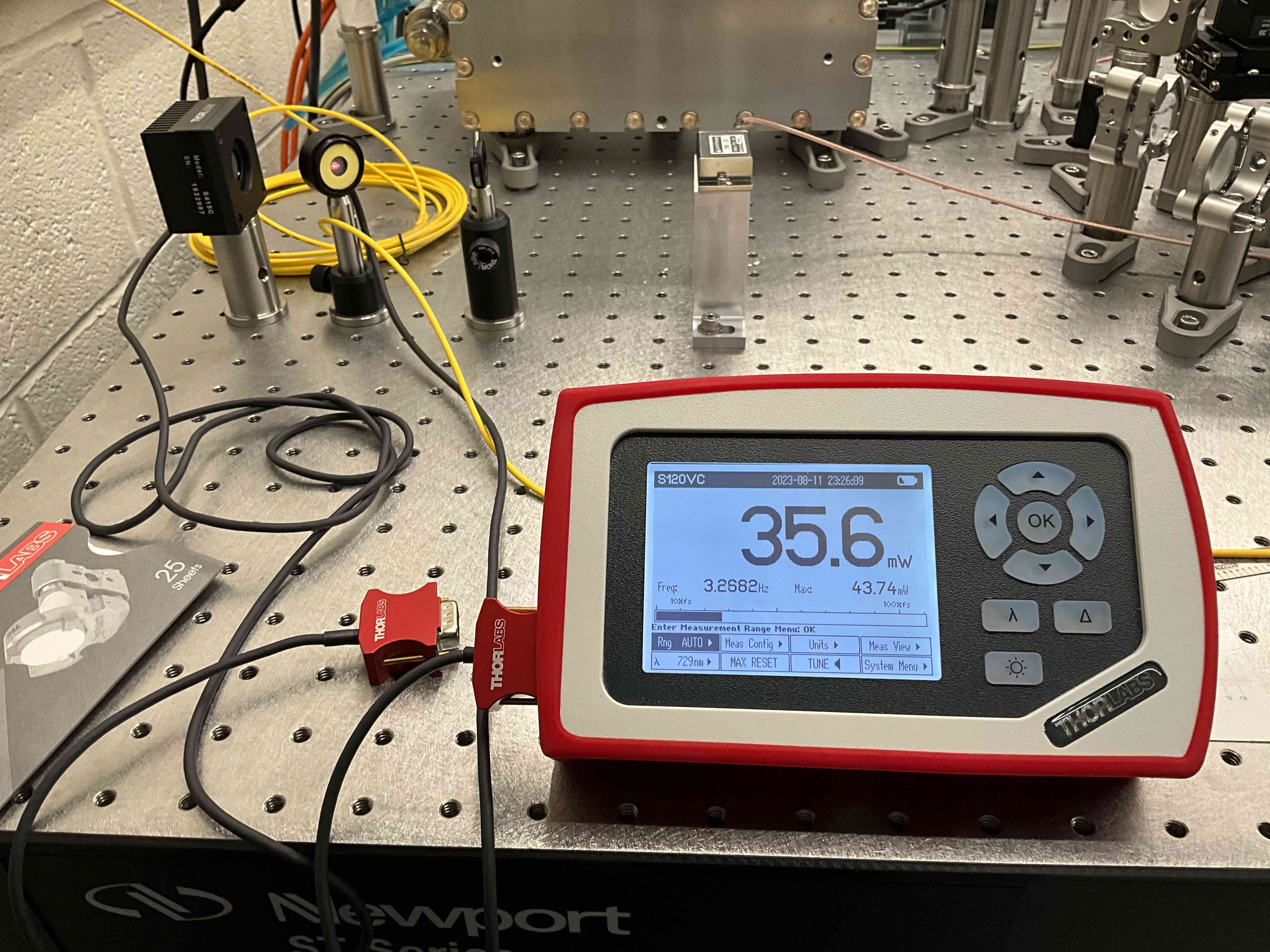Research with Photonics and Quantum Electronics Group (PQE)
PI: Prof. Karan Mehta, Cornell University, School of Electrical and Computer Engineering.
Publications here.
 Experimental: RF circuit setup to modulate laser beam.
Experimental: RF circuit setup to modulate laser beam.
 Experimental: laser beam path alignment and setup, for fiber noise cancelation system.
Experimental: laser beam path alignment and setup, for fiber noise cancelation system.
 Computational: numerically simulating electrode voltage effects on ion qubit
confinement potential.
Computational: numerically simulating electrode voltage effects on ion qubit
confinement potential.
I'm currently a research assistant to Prof. Karan Mehta in the Photonics and Quantum Electronics
Group at Cornell.
My research centers on investigating high-coherence control methods for trapped-ion
quantum information processing devices.
There are experimental and computational aspects to my work.
My experimental work currently involves setting up a fiber noise
cancelation system for the 729nm
laser system used for ion qubit addressing. Drawing upon on the
method outlined in Ma et. al. (1994), I led the layout and implementation of the beam path, and
created the bill of materials for the overall system.
Working with PhD candidate Hamim Mahmud Rivy, I gained a strong background in using experimental
optics equipment, laser beam alignment techniques, and foundational photonics principles.
My computational research involves simulating systems for
high-coherence ion qubit manipulation. During the summer of 2023, I developed a novel algorithm
to
optimize permanent magnet shapes for
high-uniformity magnetic field generation. These high-uniformity
magnetic fields would be integral
for ensuring stable Zeeman level splitting in ions at different regions of the ion trap, thus
mitigating ion qubit dephasing. Implemented in Python, my algorithm was able to optimize magnet
geometries to result in a
1000x improvement in field uniformity over existing designs, suggesting that there
could
be significant benefits in using these optimized geometries to improve ion qubit coherence.
I am also working on numerically simulating surface electrode trap potentials for ion
confinement. I
first characterized the ion trap electrodes in Python, determining
the
spatial electric
potential distribution due to a unit voltage applied to each electrode. This is based on a
method
based on Allcock et. al. (2011). Following that, I generated different basis voltage sets for
different trapping potential configurations, i.e. axial, tilt, y-compensation. I am currently
working to optimize the trap depth of the total trapping potential seen by the ion.
(2017 to 2018) Research with Temasek Labs
PI: Prof. Tony Quek, Singapore University of Technology and Design.
 Compact inertial measurement units for human movement data collection.
Compact inertial measurement units for human movement data collection.
 The system is hardware efficient: only 3 IMUs were needed, relaying data over wireless serial
connection to local area base-station that can be hosted on a laptop.
The system is hardware efficient: only 3 IMUs were needed, relaying data over wireless serial
connection to local area base-station that can be hosted on a laptop.

 Demo of wireless human activity recognition system for a variety of actions.
Demo of wireless human activity recognition system for a variety of actions.


 SVM categorization matrix for human activity samples. 99.1% accuracy in benchmark test.
SVM categorization matrix for human activity samples. 99.1% accuracy in benchmark test.
Developed machine learning-integrated embedded systems for human
activity
recognition to improve
safety of at-risk persons. Collected and characterized movement data for a variety
of activities
(e.g. sitting, walking, climbing stairs) using embedded networked sensors. Designed and trained
self-designed Tensorflow LSTM deep neural networks and support vector machines (SVMs) on
processed
data to categorize activities using real-time sensor inputs with accuracy >97%.
Presented project at finals of the Singapore Science and Engineering Fair 2018.